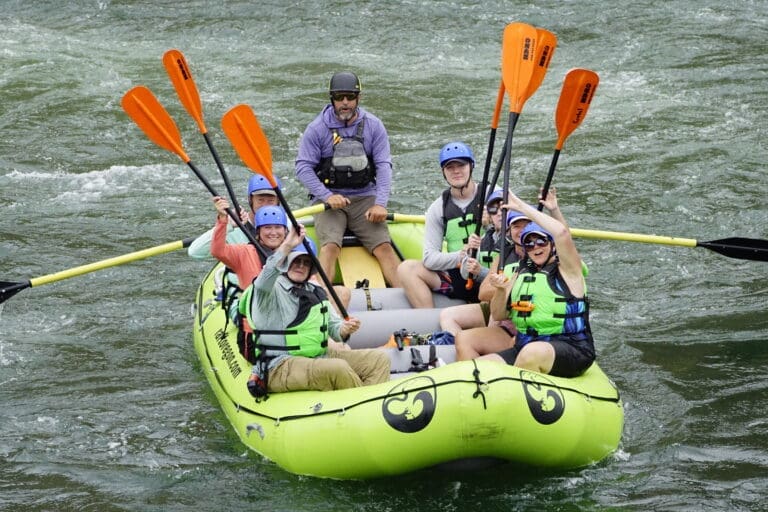
The Deschutes River’s headwaters are in the Cascade Mountains of Oregon, where melting snow seeps into the ground and reemerges as Little Lava Lake, from which the Deschutes flows. As a Wild and Scenic River, the Deschutes is treasured for its water quality, as well as its fish and wildlife. Black bears, otters, bobcats, and mule deer use the river corridor, while birds of prey like bald eagles and osprey fly overhead and nest along the cliffs. Steelhead, trout, and other fish species call the river itself home, and the river is highly regarded in the fly fishing community.
The Deschutes River has been an important route for people throughout history. Columbia River Native American Tribes, including the Tenino, Tygh, Wyam, and Sahaptin have used the land and river for hunting and fishing for thousands of years. The Wascoes, the Warm Springs, and the Paiutes also used the river and still live in the region today. During the nineteenth century, fur traders and pioneers, as well as Lewis and Clark, came upon the Deschutes River. The Deschutes River was also along the Oregon Trail, and the crossing was a major obstacle for travelers on the Oregon Trail. The main crossing point was near the mouth of the river, at what is today the Deschutes River State Recreation Area, and people used to camp on the bluffs there before attempting the crossing. In the late nineteenth century, there was also a ferry across the river right in Maupin, known as Hunt’s Ferry.
The Nez Perce tribe named the river ‘Towarnehiooks’, which translates to ‘enemies’, because the Paiutes, a warring tribe, lived along it. The Lewis and Clark expedition recorded the name Towarnehiooks after their first encounter with the river in 1805 and then attempted to rename it to Clark River in 1806. The name didn’t stick, however. Early nineteenth-century French fur traders named the cascading river ‘Riviere des Chutes’, or ‘River of the Falls’. The present name, Deschutes, originates from this French name.
The Deschutes River is located in central Oregon and provides much of the drainage on the eastern side of the Cascade Range. It flows north to where it joins the Columbia River, which flows into the Pacific Ocean.
Many of our river guests day trip from Bend, OR to our outpost in Maupin for a whitewater rafting trip on the Deschutes. The Visit Bend website is a great resource for info on where to stay in Bend, OR.
Note that it is a 1 1/2 hour drive to Maupin from Bend, OR.
The Maupin chamber website is a great resource for info on where in and around Maupin, Oregon to stay. We are close to Portland & Bend for convenient vacation getaways.
Our multi-day Deschutes River Wilderness Raft Trip includes three days of rafting and two nights of riverside camping. We start around 8:30 AM on Day 1 and end around 4:00 PM on Day 3.
The rapids on the Deschutes River near Maupin, OR are rated Class 2-3+. Descriptions for Class 2 and 3 rapids are:
The Deschutes River runs through Maupin Oregon. This is a popular river for white water rafting and fishing. Guided rafting trips are most popular June-September.
We hold deep respect for the ancestral Indigenous lands that we operate on.
The Deschutes River has been home to Indigenous communities for thousands of years, including the Tenino, Tygh, Wyam, Sahaptin, as well as the Wascoes, the Warm Springs, the Paiutes, and others. These Native American tribes have cultivated a deep connection with the river, and many of them maintain its health today. The first recorded name of the Deschutes River comes from the Nez Perce tribe, who named the river ‘Towarnehiooks’.Towarnehiooks translates to ‘enemies’ because the Paiutes, a warring tribe, lived along the river.
Acknowledging the Indigenous communities whose lands we visit is a crucial step in understanding our shared history and the ongoing challenges faced by these populations today. For more insight, visit our Territory Acknowledgement page. We encourage you to learn about the people whose land we’re privileged to explore by following the links above. Our Territory Acknowledgement is an evolving project. If you find missing information or acknowledgments, please share it with us. Together, we can ensure accuracy, inclusivity, and respect. Thank you.